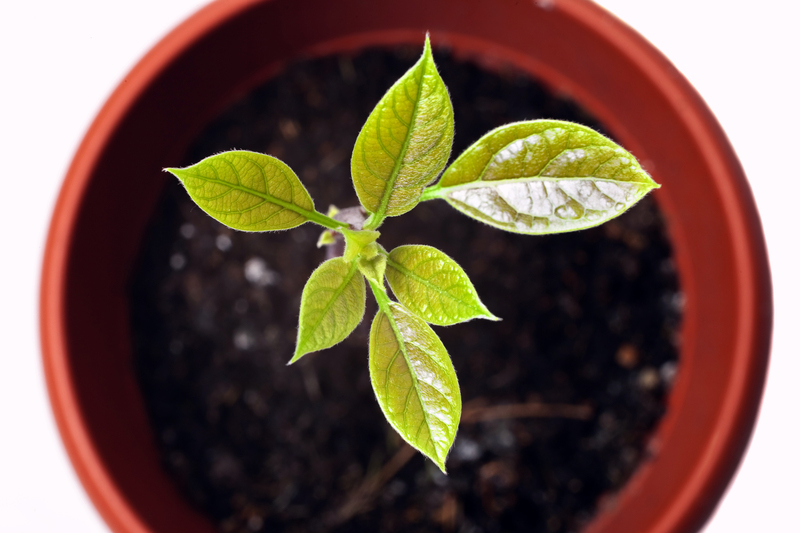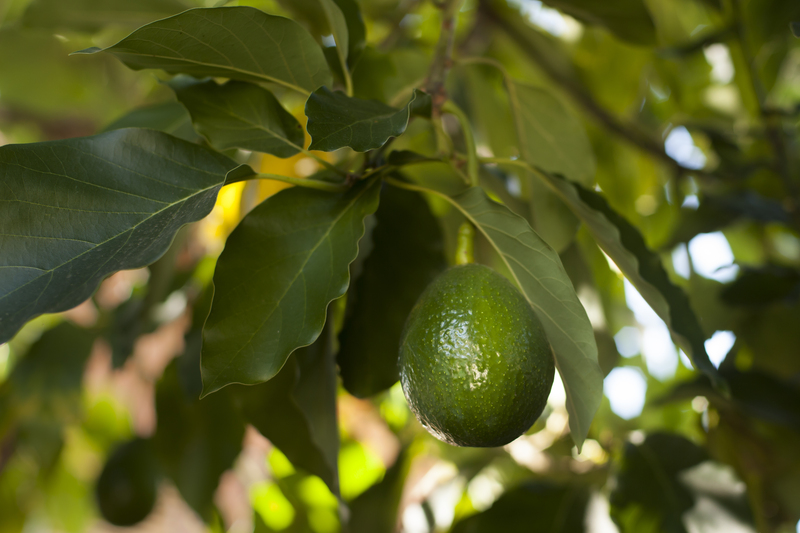Organic Waste into Soil Abundance
Posted on 07/09/2025
Organic Waste into Soil Abundance: Transforming Trash into Treasure
Organic waste is often viewed as a liability, something to be discarded. Yet, when managed properly, this so-called 'waste' becomes the cornerstone of sustainable agriculture and thriving gardens. Turning organic waste into soil abundance allows us to create nutrient-rich soils, reduce landfill usage, and support biodiversity. This comprehensive guide explores the journey of organic matter from household or farm waste to vital, life-sustaining soil.

Understanding Organic Waste
To unlock the power of organic waste into soil enrichment, we first need to clearly understand what counts as organic matter. Organic waste includes biological materials that can naturally decompose, such as:
- Vegetable and fruit scraps
- Eggshells
- Used coffee grounds and filters
- Tea bags (natural fiber)
- Grass clippings and leaves
- Wood chips and sawdust (untreated)
- Manure from herbivores
- Paper and cardboard (non-coated, shredded)
Organic waste conversion means processing this material for purposes like composting, mulching, or vermiculture. Non-organic or heavily processed items (plastic, glass, metals, meat, dairy, and oils) typically do not belong in these cycles, as they can introduce toxins or attract pests.
Why 'Soil Abundance' Matters
Healthy, fertile soil is the foundation of productive gardens, farms, and natural ecosystems. Abundant soil teems with microorganisms, retains water efficiently, cycles nutrients rapidly, and supports robust plant growth. Yet, industrial agriculture and urban expansion often deplete these resources. Reintegrating organic waste into the soil closes the nutrient loop, restores fertility, and builds long-term resilience.
The Science Behind Composting: Nature's Recycling System
The transformation of organic waste into soil abundance is largely driven by the process of composting--a controlled decomposition of organic matter carried out by microbes, fungi, insects, and worms. Composting not only recycles nutrients but also helps control pathogens and weed seeds, resulting in a disease-suppressing soil conditioner.
The Composting Process Explained
- Microbial Decomposition: Bacteria, fungi, and actinomycetes break down complex organic molecules (such as cellulose and lignin) into simpler compounds.
- Temperature Rise: As microbes digest food and yard waste, temperatures can soar up to 60?C (140?F), speeding decomposition and killing harmful organisms.
- Humus Formation: Given enough time, the compost stabilizes and cools, yielding a crumbly, dark brown, earthy-smelling substance rich in humus--a vital component of fertile soil.
Keys to Efficient Composting
- Proper Balance of Greens and Browns: Greens are nitrogen-rich (e.g., food scraps, fresh grass), while browns contain carbon (e.g., dried leaves, cardboard). Aim for a 2:1 brown-to-green ratio for optimal microbial activity.
- Moisture Management: Keep the pile moist, like a wrung-out sponge--not too wet, not too dry.
- Aeration: Turn or fluff your compost regularly to allow oxygen into the pile, preventing odor and increasing speed of decomposition.
- Particle Size: Shred or chop materials to expose more surface area for microbes to work.
Vermiculture: Harnessing Worms for Soil Abundance
Another effective method for transforming organic material into soil vitality is vermiculture--the practice of using composting worms such as red wigglers (Eisenia fetida). These remarkable creatures turn kitchen scraps and soft organic matter into a finely textured, plant-friendly fertilizer known as worm castings.
Benefits of Vermicomposting
- Rapid Decomposition: Worms accelerate the breakdown of organic waste compared to standard composting.
- Superior Fertility: Worm castings are exceptionally rich in nutrients and plant growth hormones.
- Space Efficiency: Ideal for small apartments or urban homes lacking outdoor space.
- Odor Reduction: When managed properly, vermicomposting emits virtually no odor.
Setting Up a Simple Vermiculture System
- Choose a Container: Shallower bins work best, with drainage holes and a tight-fitting lid.
- Add Bedding: Use shredded newspaper, coconut coir, or leaf mold as a starting layer.
- Introduce Worms: Start with at least 500 red wigglers for domestic-scale composting.
- Feed Gradually: Bury food scraps under bedding and avoid citrus, onions, and greasy foods at first.
Sheet Mulching and Lasagna Gardening
For gardeners and urban land stewards, sheet mulching offers an accessible way to convert yard waste, cardboard, and compostable materials directly into soil abundance--no bins or turning required. Also called the lasagna method, this approach mimics forest floor build-up, gradually decomposing layers in place.
How to Sheet Mulch:
- Suppress weeds with overlapping sheets of cardboard or thick newspaper (wet them down to prevent drying).
- Layer organic materials like grass clippings, wood chips, leaves, straw, and compost in alternating layers, mimicking a 'lasagna'.
- Finish with mulch (wood chips, straw, or leaf mold) to seal in moisture and nutrients.
- Let nature take over: Earthworms, insects, and microbes will gradually transform the pile into rich, loose topsoil.
Sheet mulching is ideal for starting new garden beds, improving poor soils, or reclaiming weedy patches. It requires minimal effort while giving impressive results over the course of weeks to months.
Benefits of Empowering Soil Through Organic Waste Recycling
- Fertile Soil: Organic waste infusion increases soil organic matter, boosting water retention, aeration, and root development.
- Closed-Nutrient Loop: By recycling nutrients, we reduce dependence on synthetic fertilizers.
- Reduced Landfill Waste: Diverting kitchen and yard scraps significantly lowers greenhouse gas emissions and landfill overuse.
- Enhanced Plant Health: Soils enriched with compost or worm castings harbor beneficial organisms that suppress pests and disease.
- Cost Savings: Homemade compost reduces the need for expensive soil amendments and fertilizers.
- Sustainable Cities: From household compost bins to municipal green waste programs, organic matter recycling supports urban food security and climate resilience.
Organic Waste to Soil Abundance: Common Mistakes and Solutions
Avoiding Pitfalls in Composting and Soil Enrichment
- Compost Pile Too Wet or Smelly? This usually indicates too much green (nitrogen) content or poor aeration. Solution: Add browns (leaves, straw), turn more often, and limit wet scraps.
- Slow or No Decomposition? The pile may be too dry or cold, or you may lack sufficient green material. Solution: Moisten as needed and add green waste like grass or coffee grounds for microbial fuel.
- Presence of Pests? Avoid adding meat, dairy, or oils, and always bury food scraps under bedding or browns in worm bins.
- Unwanted Weeds in Mulch? Make sure all green waste added to sheet mulch is weed-free or well-broken down to prevent spreading seeds.
Scaling Up: Community and Municipal Organic Waste Programs
The transition of organic waste into soil abundance is not just for backyard gardeners. Cities, schools, and farming communities are increasingly launching large-scale composting systems to handle food and green waste, generating premium compost for landscaping, agriculture, and urban greening.
Case Studies of Successful Organic Waste Recycling
- San Francisco's Municipal Composting: The city mandates organic waste collection, converting food scraps into fertile compost used by local vineyards and parks.
- Local School Gardens: Some schools engage students in composting and gardening projects, reinforcing lessons in science, ecology, and nutrition.
- Agricultural Cooperatives: Farmers pool organic material from multiple sources, running centralized composting operations for mutual benefit.
Frequently Asked Questions About Organic Waste into Soil Abundance
Q: What is the fastest way to turn organic waste into fertile soil?- Hot composting is the quickest method, reaching high temperatures to rapidly break down waste--finished compost can be ready in as little as 6-8 weeks with proper turning.
- Most plant and food scraps are suitable, but avoid meat, dairy, fats, and heavily processed or chemically treated materials.
- If managed properly, compost bins rarely attract pests. Always cover food scraps, maintain correct moisture, and avoid overloading with attractive materials.
- Absolutely! Vermiculture bins or Bokashi fermentation systems can efficiently process food scraps indoors with minimal odor.

Tips for Maximizing Soil Abundance from Organic Waste
- Chop Waste Small: Get faster results by cutting kitchen scraps and yard debris into small pieces, increasing surface area for decomposition.
- Layer Materials: Alternate greens and browns to ensure an even breakdown and avoid compacting the pile.
- Monitor Moisture: The right moisture level is crucial; drier piles decompose slowly, while soggy ones attract pests and result in odors.
- Include Soil or Finished Compost: A small scoop of soil or finished compost jumpstarts the process by introducing beneficial microbes.
- Time Applications: Allow compost to cure for several weeks after active decomposition for maximum nutrient stability before using in gardens.
Conclusion: Redefining 'Waste' as a Resource
In summary, converting organic waste into soil abundance is a practical, environmentally friendly, and rewarding process. Whether you choose traditional composting, vermiculture, or sheet mulching, every kitchen scrap or yard clipping can contribute to healthier gardens and a cleaner planet. The cycle of returning organic materials to the earth regenerates soils, sequesters carbon, and transforms our relationship with what we once called 'trash'.
By embracing the methods outlined above, individuals, communities, and cities can nurture a more sustainable future. Take the first step today: start collecting your organic waste, experiment with composting or mulching, and witness the transformation of waste into wealth--soil that feeds the next generation.

